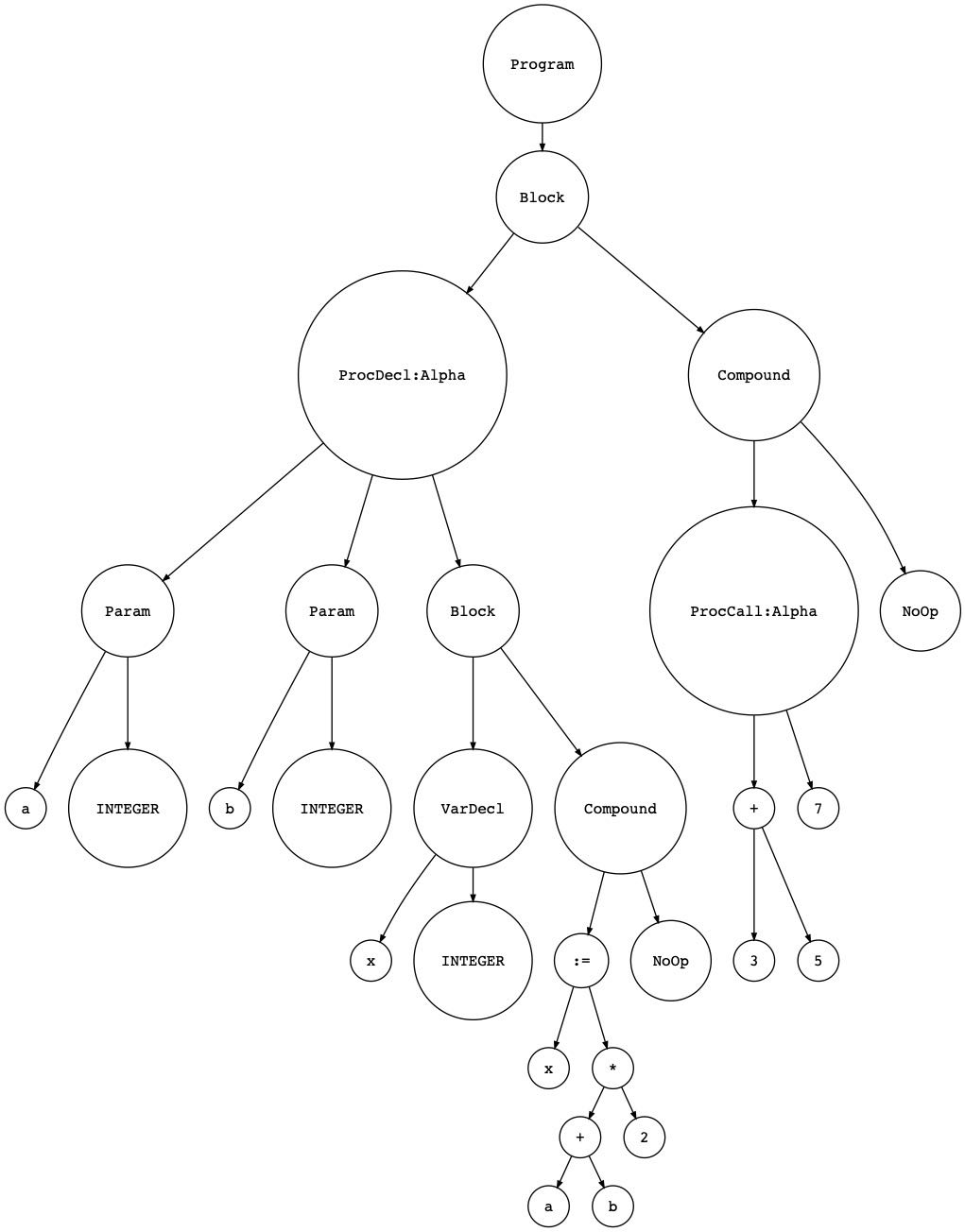本系列是《Let’s Build A Simple Interpreter》的阅读笔记。
本文的目标是确保当解释器读取一个带有过程调用的程序时,parser 会构造一个 AST,并为过程调用构建一个新的树节点。
Parser
- 新增 AST 节点
1
2
3
4
5
| class ProcedureCall(AST):
def __init__(self, proc_name, actual_params, token):
self.proc_name = proc_name
self.actual_params = actual_params
self.token = token
|
- 扩展语法:添加过程调用语句语法 proccall_statement
1
| proccall_statement : ID LPAREN (expr (COMMA expr)*)? RPAREN
|
下面是几条符合上述语法规则的语句:
1
2
3
| Alpha();
Alpha(1);
Alpha(3 + 5, 7);
|
对应语法的实现如下:
1
2
3
4
5
6
7
8
9
10
11
12
13
14
15
16
17
18
19
20
21
22
23
24
25
| def proccall_statement(self):
"""proccall_statement : ID LPAREN (expr (COMMA expr)*)? RPAREN"""
token = self.current_token
proc_name = self.current_token.value
self.eat(TokenType.ID)
self.eat(TokenType.LPAREN)
actual_params = []
if self.current_token.type != TokenType.RPAREN:
node = self.expr()
actual_params.append(node)
while self.current_token.type == TokenType.COMMA:
self.eat(TokenType.COMMA)
node = self.expr()
actual_params.append(node)
self.eat(TokenType.RPAREN)
node = ProcedureCall(
proc_name=proc_name,
actual_params=actual_params,
token=token,
)
return node
|
- 扩展语法:将过程调用语句语法 proccall_statement 添加到 statement 中
1
2
3
4
| statement : compound_statement
| proccall_statement
| assignment_statement
| empty
|
proccall_statement 和 assignment_statement 都是以 ID token 开头的,例如:
通过下面的方式可以区分这两者:
1
2
3
4
5
6
| if (self.current_token.type == TokenType.ID and
self.lexer.current_char == '('
):
node = self.proccall_statement()
elif self.current_token.type == TokenType.ID:
node = self.assignment_statement()
|
SemanticAnalyzer
SemanticAnalyzer 的更改仅仅是添加 visit_ProcedureCall 方法:
1
2
3
| def visit_ProcedureCall(self, node):
for param_node in node.actual_params:
self.visit(param_node)
|
Interpreter
对于解释器,由于目前还不用执行过程调用,所以函数没有内容:
1
2
| def visit_ProcedureCall(self, node):
pass
|
AST 示例
下面是本文用到的例子:
1
2
3
4
5
6
7
8
9
10
| program Main;
procedure Alpha(a : integer; b : integer);
var x : integer;
begin
x := (a + b) * 2;
end;
begin
Alpha(3 + 5, 7);
end.
|
其对应的 AST 如下:

